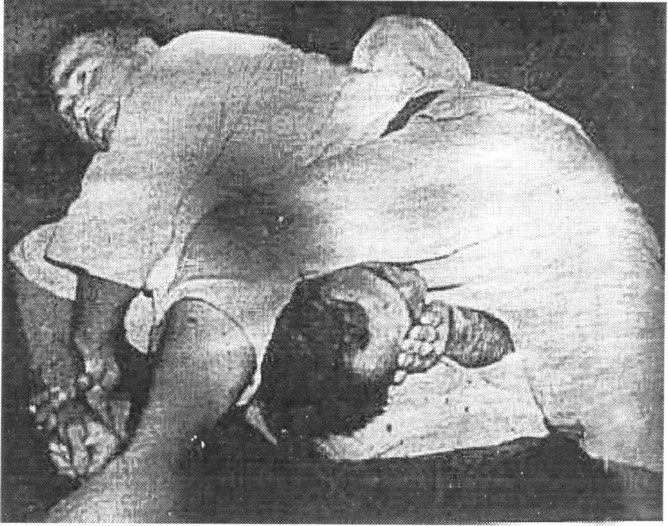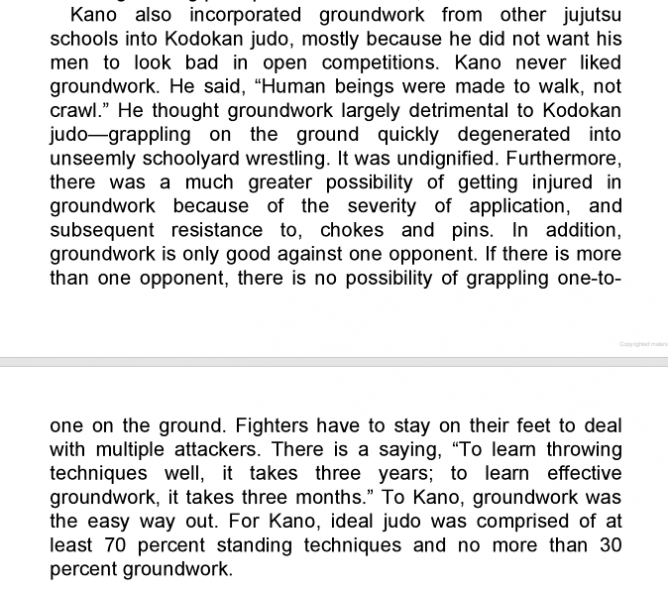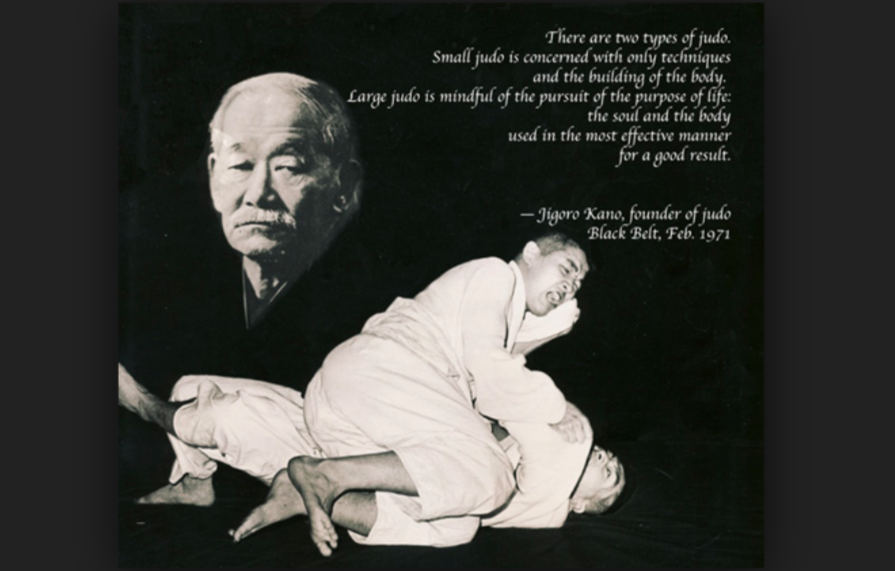Kanō Jigorō was the founder of Judo. Judo was the first Japanese martial art to gain widespread international recognition, and the first to become an official Olympic sport. Pedagogical innovations attributed to Kanō include the use of black and white belts, and the introduction of dan ranking to show the relative ranking among members of a martial art style. Well-known mottoes attributed to Kanō include “Maximum Efficiency with Minimum Effort” and “Mutual Welfare and Benefit”.
In regards to Newaza (groundwork), Kano Jigoro wanted Judo to be predominantly a standing activity and not what he deemed to be ‘wrestling on the ground’.
He stated: “Humans wear meant to walk, not crawl”
He wanted Judoka to focus on placing big throws in randori which score ippon. This mentality comes from the samurai philosophy of taking out the opponent as fast as possible without having to go to the ground.

Judoka Masahiko Kimura submitted Helio Gracie
For Judoka, Newaza is still useful as part of Judo as it allows older Judoka and children to practise a low impact activity.
Kano’s biography ‘The Way of Judo: A Portrait of Jigoro Kano and His Students”, talks about his philosophy regarding Newaza :


















